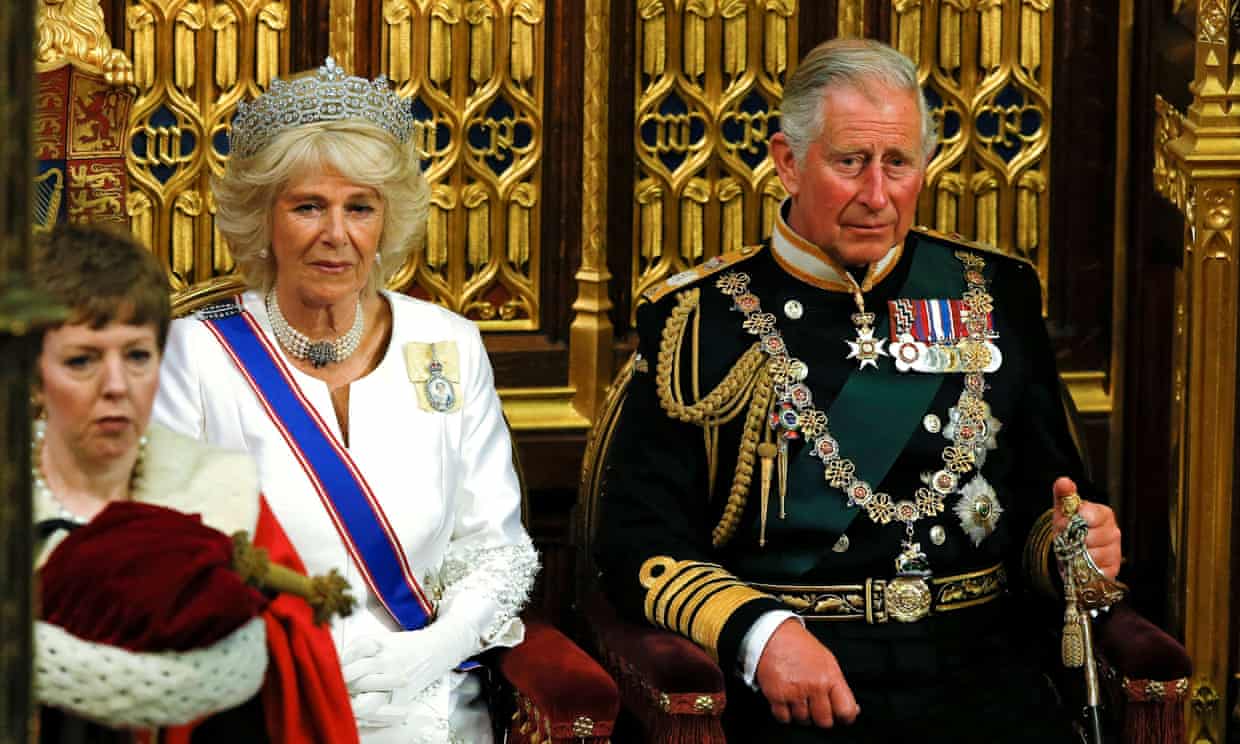Prince Charles pays tribute to ‘darling wife’ and future queen Camilla
First in line to throne thanks Duchess of Cornwall for support as royal family paves way for her to take title of queen.
"The Prince of Wales has paid tribute to his “darling wife” the Duchess of Cornwall for her “steadfast support” after the Queen announced that Camilla will be known as “Queen Consort” when Charles becomes king.
In a statement released on Sunday, Charles heralded the Queen for the way her “devotion to the welfare of all her people inspires still greater admiration with each passing year”.
Elizabeth II, who has become the first British monarch in history to celebrate 70 years on the throne, used her milestone to issue her royal seal of approval for Camilla to become Queen Camilla. . .In an intervention that shapes the future of the monarchy, the Queen expressed her “sincere wish” that Camilla be known as Queen Consort when the Prince of Wales becomes King, and called on the public to support them both. "
The House of Hanover
Kings by accident of birth, the Hanoverians ushered in a new style of royal rule which, allied with political and societal changes already underway in England, led to a new form of government.
George I succeeded to the throne on the death of his Stuart cousin, Queen Anne, in 1714. Never overly fond of his new realm, he divided his time between England and Hanover. His son, George II, was far more proactive when he became king in 1727 although much of the day to day politics had passed to parliament. George occupied himself with foreign affairs and became the last British king to lead his troops into battle.
He was succeeded by his grandson, George III, whose reign saw a further consolidation of parliamentary power as well as a mixed success in foreign policy marked, ultimately, by the loss of Britain’s colonies in America. George II suffered serious mental health problems in his later years and the last decade of his reign saw his son rule as regent.
That prince became king in 1820 as George IV and reigned for another ten years, marked by decadence and scandals over his private life. He was succeeded by his popular brother, William IV, in 1830. Despite fathering a nursery of illegitimate children who lived to adulthood, William and his wife, Adelaide, lost their own sons and daughters very early on and knew that one day the throne would pass to the king’s niece, Victoria
Monarchy Rules: what happened to the House of Hanover?
====================================
Infographic: Queen Elizabeth II’s jubilee and her 70-year reign
Al Jazeera takes a look at the life, family and wealth of the longest-reigning British monarch.

"Queen Elizabeth II is the United Kingdom’s longest-reigning royal and among the world’s longest-ruling monarchs in history.February 6 marks the queen’s platinum jubilee as she ascended to the throne 70 years ago in 1952, following the death of her father King George VI. In June 1953, Elizabeth was officially crowned as the queen of the UK and queen regnant of seven Commonwealth countries at the time.
The platinum jubilee will be celebrated in June in the UK, as people mark the day with street parties and a long weekend.
Succession to the British throne
> Queen Elizabeth II is the third monarch of the House of Windsor, the official name adopted by the royal family in 1917.
She was 25 years old when she acceded to the throne, the eldest of King George VI’s children and next in line to rule. Succession to the British throne determines who will become the next king or queen. It is decided based upon descent, religion and primogeniture.
Protestant descendants of Princess Sophia, the granddaughter of James I, are eligible to the throne. The future monarch must also be “in communion” with the Church of England.
> Previously, younger male heirs acceded to the throne displacing elder daughters. However, in 2013, a law was passed that allowed female heirs equal rights in the line of succession.
The current line of succession for the British crown is:
Charles, the prince of Wales (73)
Prince William, the duke of Cambridge (39)
Prince George (8)
Princess Charlotte (6)
Prince Louis (3)
On September 9, 2015, Queen Elizabeth became the UK’s longest-ruling monarch overtaking her great-great grandmother Queen Victoria, who reigned for more than 63 years.
___________________________________________________________________________
Political milestones
During Queen Elizabeth’s 70-year reign, the UK has been led by 14 different prime ministers...In the span of the queen’s rule, many significant royal, national and world events have occurred, from the establishment of the European Union (EU) to the Iraq War and the UK’s exit from the EU.
[...] Commonwealth countries

The queen is currently the head of state to 15 countries, all part of the Commonwealth – a 54-member group of former British colonies – with a total population of 2.5 billion people. . .
How much does the royal family cost?
The queen’s income comes from the Sovereign Grant, the privy purse and her personal investments. The government pays the queen a lump sum known as the Sovereign Grant which covers the queen’s official duties.
Last year, the royal family received 87.5 million pounds ($118.6m) from the UK government, 34.4 million pounds ($46.6m) of which was spent on the refurbishment of Buckingham Palace.
The Sovereign Grant is a percentage of the Crown Estate, which are profits made from the estates belonging to the monarchy.
Last year, the Crown Estate made 269.3 million pounds ($365.1m) in revenue.
Previously, 15 percent of the Crown Estate was set aside for the Sovereign Grant, but this has increased to 25 percent since 2017-18, partly put down to costs related to the renovation of royal properties.
The revenue of the Crown Estate dropped more than 20 percent during 2020-2021 compared with the previous year as a result of the coronavirus pandemic and lack of tourism.
MORE DETAILS: https://www.aljazeera.com/news/2022/2/4/infographic-queen-elizabeth-and-the-british-royal-family-interactive




No comments:
Post a Comment